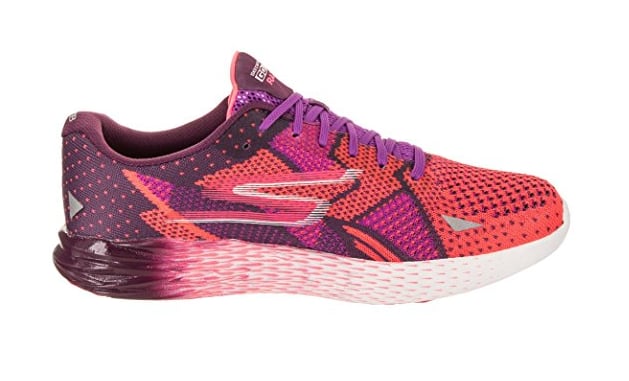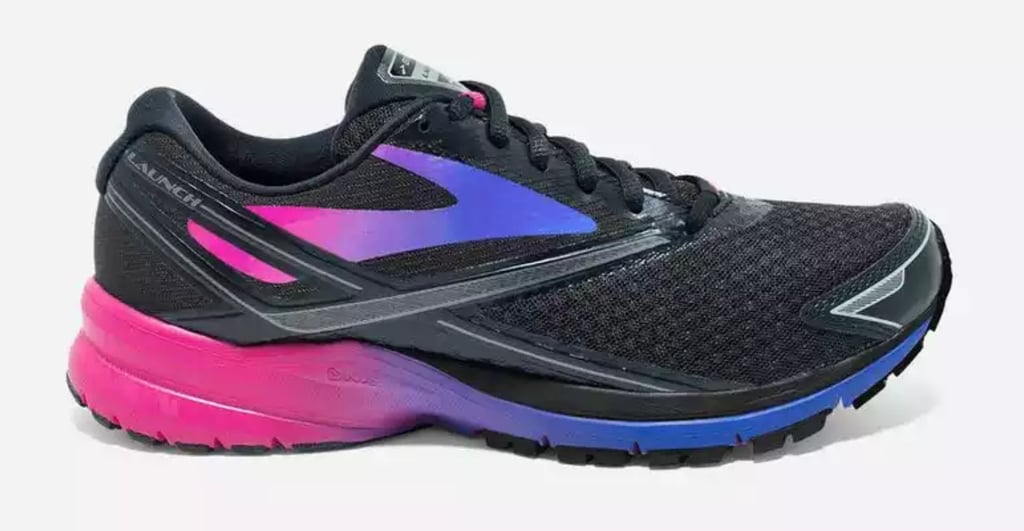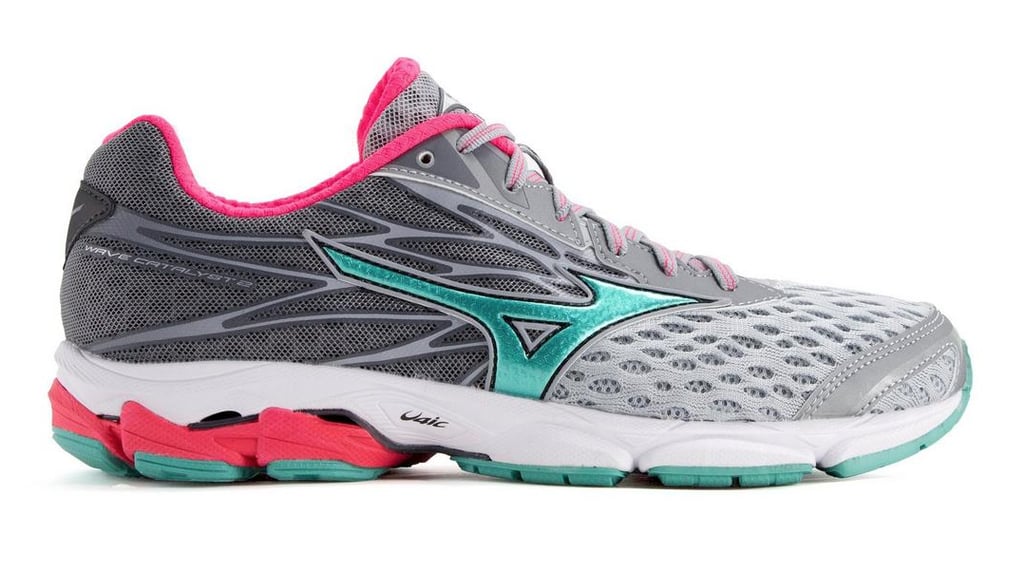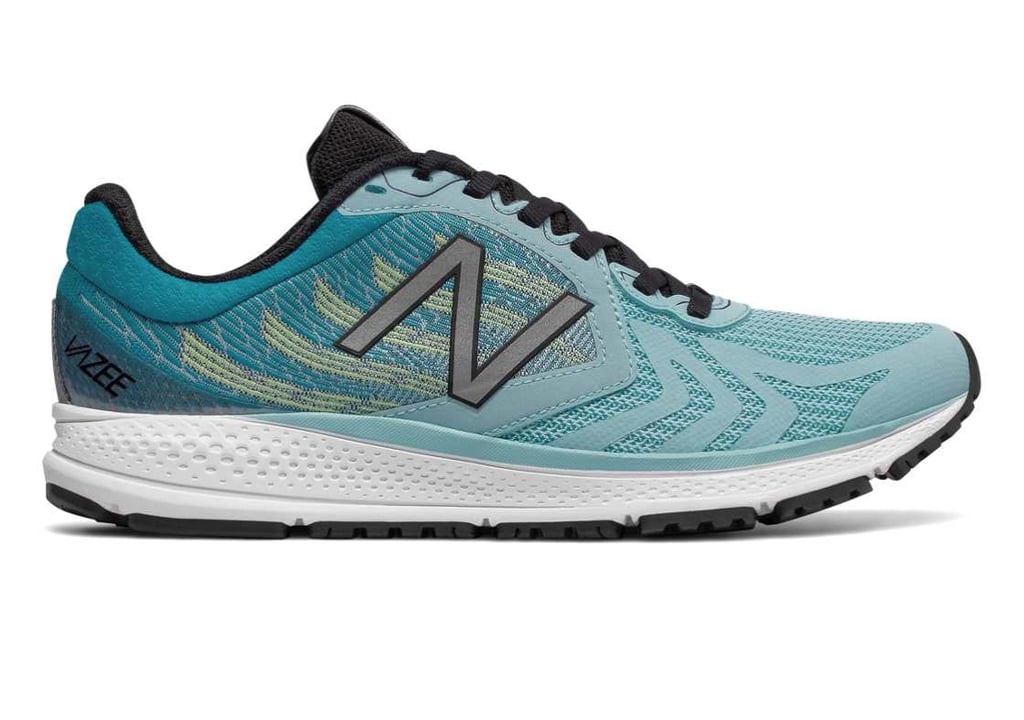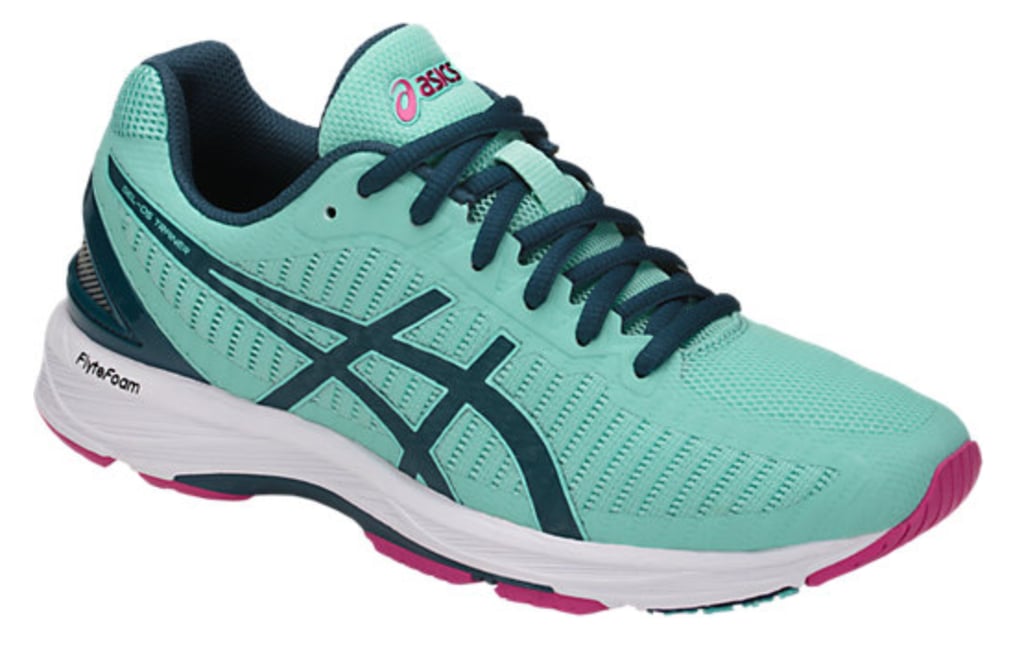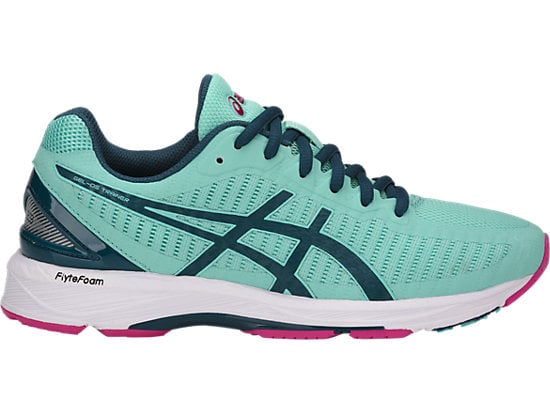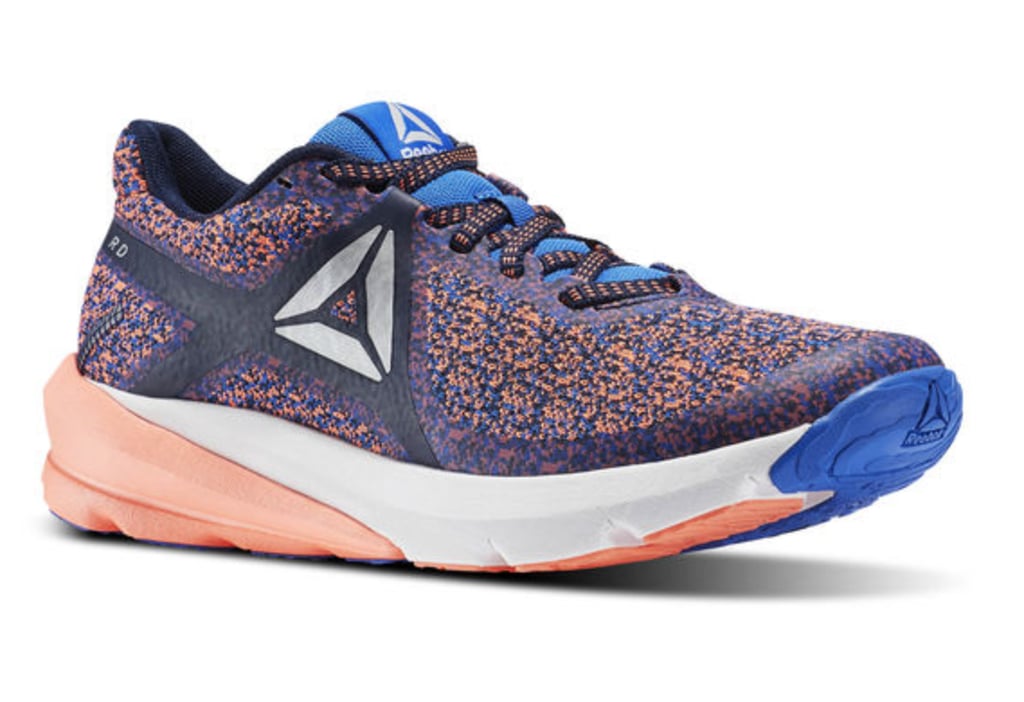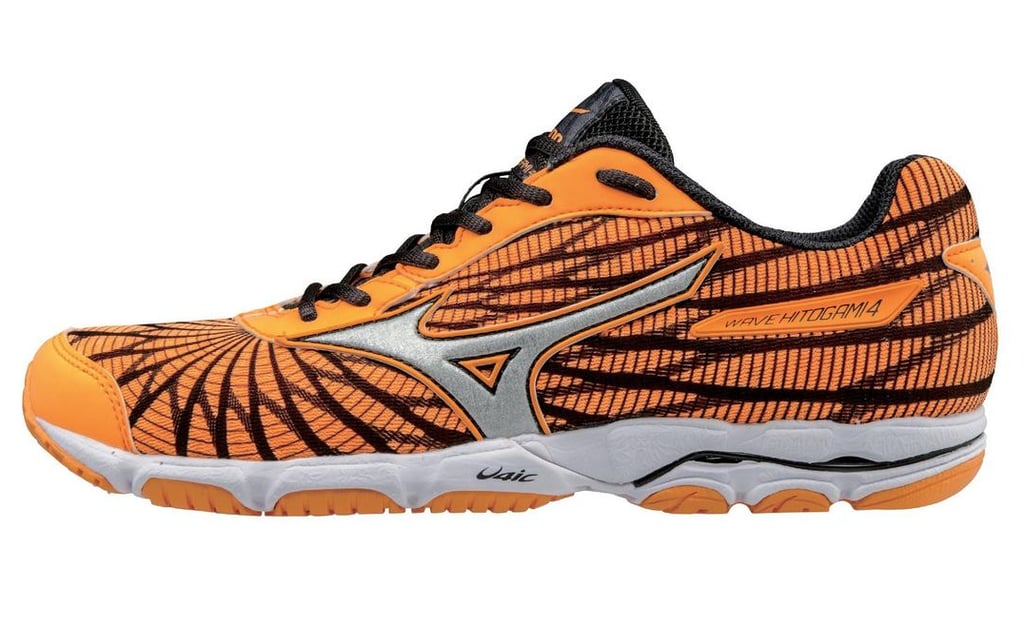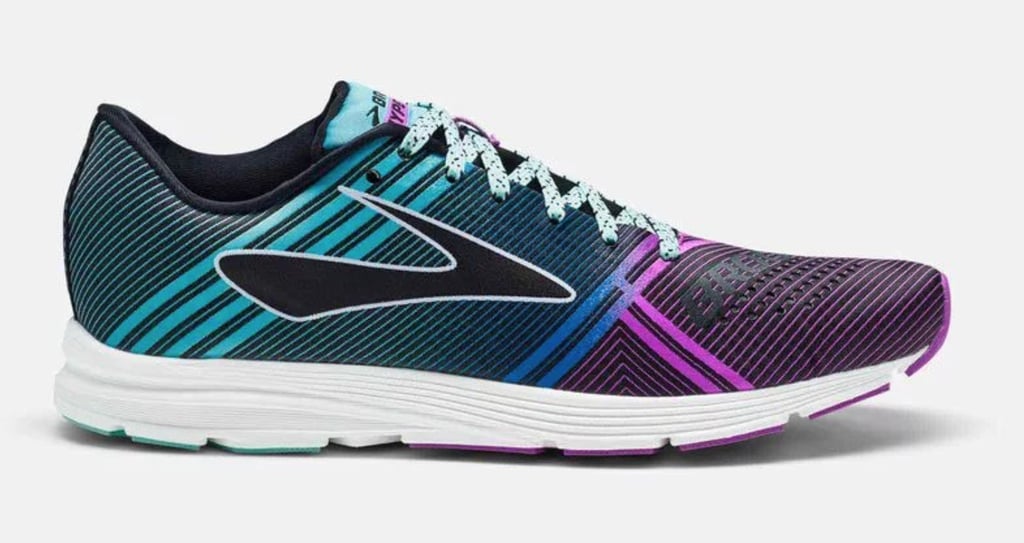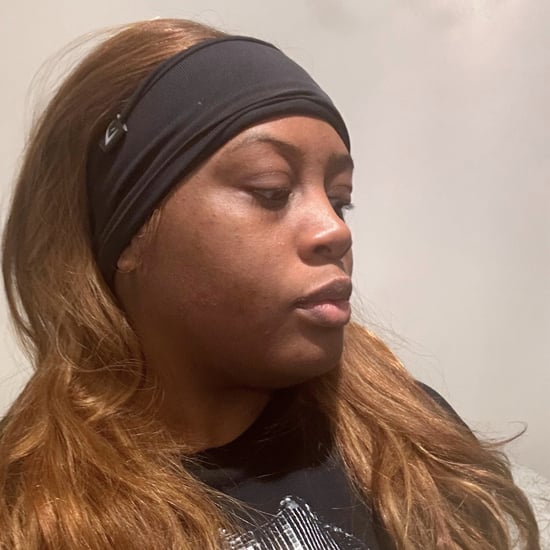How to Find the Right Sneakers
Sneakers Slowing You Down? Find the Right Shoe For Your Foot Type

As POPSUGAR editors, we independently select and write about stuff we love and think you'll like too. If you buy a product we have recommended, we may receive affiliate commission, which in turn supports our work.
In a sense, sneakers are like bras — just because they look good on doesn't mean they're providing you with the support you need. And to make matters even more complicated, a shoe that someone else swears by could be the exact opposite of what's right for you. Before venturing into the impulse inducing options of the sneaker aisle, take a few minutes to understand your foot type and what kind of shoe will keep you on track.
Identifying your foot type can be done by simply wetting the bottoms of your feet and standing on a flat, dry surface, leaving a footprint. You can also take a look at the wear patterns on some of your more broken-in shoes. If you're still having trouble determining your foot type, head to a shoe store that offers gait analysis, where a specialist observes the way your foot comes into contact with the ground.
After you've identified the wants and needs of your feet, browse our recommendations to find your new favorite kicks.
Narrow Footprint, Arch Barely Touches the Ground
If you've been blessed with the beauty of a high arch, you've also been cursed with the pain of supination, or underpronation. Supination means your foot rolls outward and strikes the ground with the outer edge of the heel and forefoot, causing wear on these areas of your sneakers. When the foot falls out, it's not able to provide the shock absorption you need to fend off shin splits, stress fractures, and sprained ankles.
Prevent these irritating injuries by wearing a highly cushioned shoe, giving you the shock absorption your foot can't deliver on its own. To encourage motion, make sure the shoe is lightweight and flexible. And ensure that motion is rolling inward, not farther outward, by choosing a shoe with minimal arch support.
Flat, Low Arched Footprint
Overpronation is when your arch is too flexible, causing your foot to fall inward when it hits the ground. You'll see wear on the inside of the heel and forefoot of your sneakers. Overpronation means the foot and ankle can't stabilize the weight of the body, putting extra strain on the muscles, tendons, and ligaments in the foot. Bunions, heel spurs, hammer toe, achilles tendonitis, and plantar fasciitis are common conditions related to overpronation.
Stabilize your stride with a pair of motion-control sneakers. Stability shoes have extra arch support, helping to more evenly distribute the impact of your step. Orthotic insoles are another option to combat overpronation. These over-the-counter shoe inserts align the foot and cushion from pounding.
Neutral, Not Flat but Not Rigid Footprint
If you've never bought a shoe based on foot type and haven't experienced the agony of aching feet and joints, you're one step ahead of the rest of us. Neutral feet roll slightly inward when the foot strikes the ground, creating a stable platform to support the weight of the body. If the wear on your sneakers is evenly distributed across the heel and forefront of the shoe, you fall into the category of those fortunate enough to be neutrally footed.
Though neutral feet typically feel comfortable in most sneakers, it's important to choose a shoe that won't drastically alter the way your foot meets the ground. Stability shoes that provide moderate pronation support are best to maintain your foot's natural motion. There are also specialty neutral running shoes, which can add cushion and support to your already effective step.
Supination: Sketchers Women's GOmeb Razor Trainer
These kicks are equally flashy and flexible, meaning they're exactly what your foot needs to promote inward motion. A light and durable build will make these your go-to shoes for carrying you through your most strenuous workouts.
Try these: Sketchers Women's GOmeb Razor Trainer ($70)
Supination: Brooks Women's Launch 4
This shoe's flexible forefront and solid heel strikes the perfect balance of supple and supportive. For the runner who has a need for speed, this shoe will allow you to comfortably pick up the pace at any moment.
Try these: Brooks Women's Launch 4 ($65)
Supination: Mizuno Women's Wave Catalyst 2
The Wave Catalyst's low and responsive heel will absorb the shock of your step without adding extra weight to slow you down. Under the arch, you'll find short waves of support, providing light and subtle structure.
Try these: Mizuno Women's Wave Catalyst 2 ($110)
Overpronation: New Balance Women's Vazee Pace v2
A sturdy sole will encourage your foot to fall into a neutral position without feeling forced. By cradling the arch, this New Balance favorite works to prevent pounding and take the pressure off your tendons.
Try these: New Balance Women's Vazee Pace v2 ($90)
Overpronation: Asics Women's GEL-DS Trainer 23
Finding firm soles that also allow for steady acceleration isn't easy, but luckily the experts at Asics found a way to wrap both of those crucial features into this supershoe. If you're obsessed with intervals, this could be the match for you.
Try these: Asics Women's GEL-DS Trainer 23 ($120)
Overpronation: Reebok Women's OSR Grasse Road
These stiff shoes will keep your arch from rolling inward and aid in distributing the impact of your step across the foot. With color options like this, who said sneakers couldn't look as good as they feel?
Try these: Reebok Women's OSR Grasse Road ($90)
Neutral: New Balance Women's Fresh Foam Zante v3
Between its stability features and capacity to easily transition from slow paced workouts to speed sessions, it seems there's nothing this shoe can't do. These kicks are a must have for anyone who finds themselves on the track one day and training for a half marathon the next.
Try these: New Balance Women's Fresh Foam Zante v3 ($80)
Neutral: Mizuno Women's Wave Hitogami 4
These lightweight shoes are great for middle distance runs where speed still matters. Runners who enjoy a natural, barefooted feel won't be able to part with their new favorite slides.
Try these: Mizuno Women's Wave Hitogami 4 ($70)
Neutral: Brooks Women's Hyperion
This thin midsole will keep your stride consistent and your feet feeling light. And you can rely on the firm cushioning to enhance your foot's natural step while also helping you maintain balance.
Try these: Brooks Women's Hyperion ($130)

